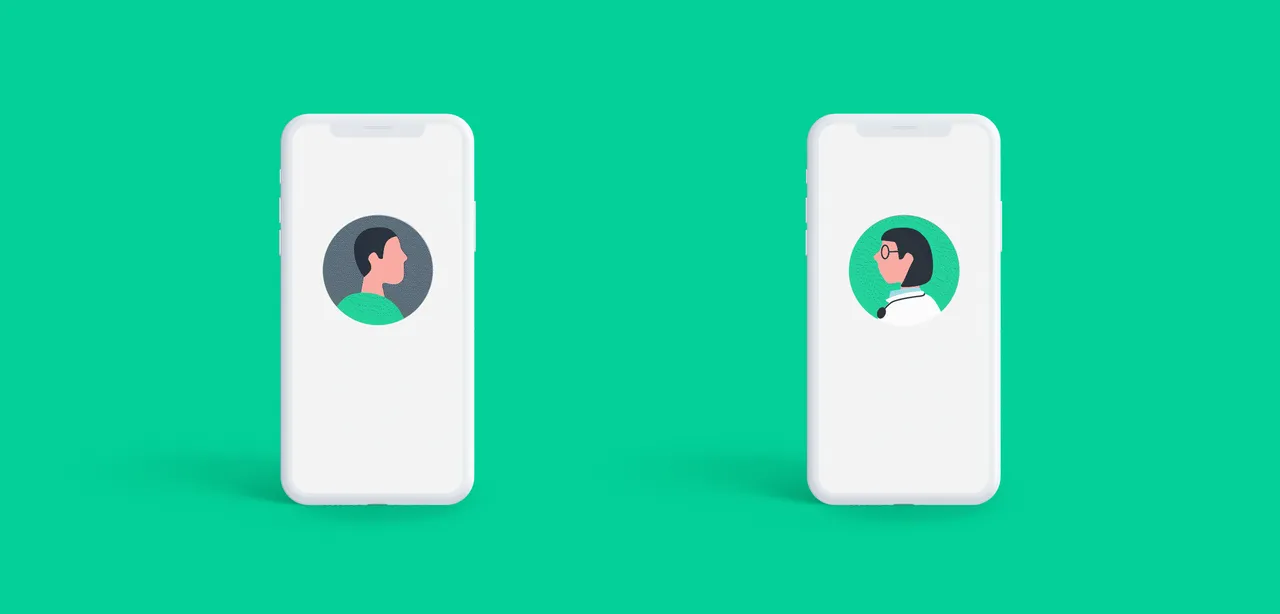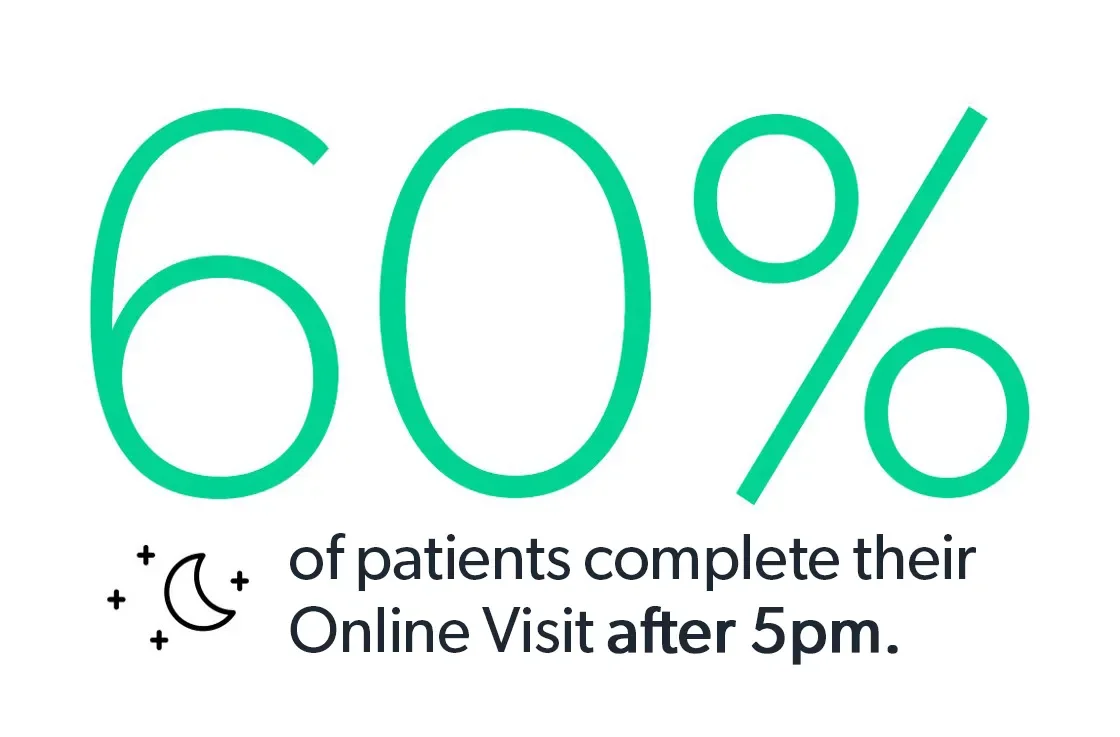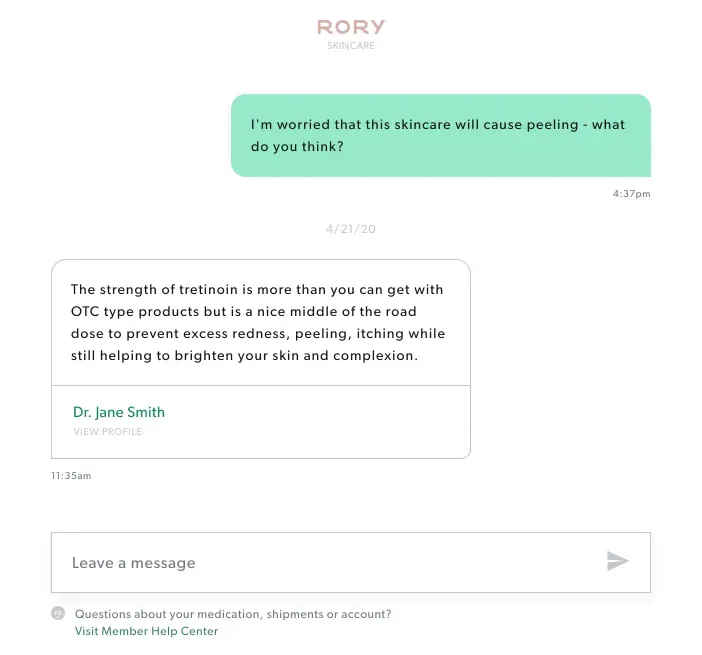Here's what we'll cover
Here's what we'll cover

Ro is building the future of healthcare by leveraging technology. We see that future as one in which technology empowers providers to deliver high-quality care and empowers patients to manage their health more easily and effectively.
In our Provider “Super Power” series, we take a deep dive into the tech-enabled solutions that are designed and built by Ro’s in-house clinical and engineering teams. These solutions empower providers — physicians, nurses, and pharmacists — to deliver the best possible care, experience, and results for patients on Ro’s telehealth platform. We call these “super powers” because they supercharge a provider’s ability to deliver high-quality care.
The option to communicate whenever it is most convenient is one of the many reasons patients and providers turn to Ro. Here, we learn how Ro enables providers and patients to seamlessly connect with one another at any time of day. And, we’ll explain why ongoing patient-provider communication is important to designing a patient-centric healthcare system.
What it is
Patients on Ro’s telehealth platform can initiate care 24 hours a day, seven days a week from any location in the U.S., no matter if it’s 1 pm or 1am. In fact, we found that 60% of patients complete an Online Visit on Ro’s platform outside of regular business hours — times when many physicians’ offices aren’t open. Patients using Ro’s platform can complete their Online Visit any time of day and take as long as they need to complete it — without the limit of timed appointments and tight schedules. In addition, a patient can directly message their provider whenever they want (and vice versa) through a secure messaging application on Ro’s platform. Providers are not limited by office hours and can evaluate and connect with patients when it is most convenient for them respectively. This makes communication convenient for patients and providers, removes the burden of arranging appointments to facilitate follow up care, and may encourage more frequent interactions.

How it works
On Ro’s platform, patient-provider communication facilitates ongoing engagement about a patient’s unique health needs and treatment plan.
Once the patient-provider relationship is established on Ro’s platform, patients can securely message their provider at any time to discuss their treatment plan. This means that patients can get answers to questions about medication efficacy or side effects, update their providers about changes in their health, or connect about anything else they’d like to discuss. Most patients receive a response within 24 hours, many times sooner, without having to schedule an additional appointment. Ro also has a dedicated Member Experience Team that manages non-medical questions, which allows providers to focus on the questions that require their clinical expertise.
Ro’s platform facilitates seamless, ongoing engagement by helping providers track the status of pending patient inquiries or responses to direct their action — removing these administrative tasks from providers’ plate. For example, Ro’s messaging system has “statuses,” so that when a provider sends a message to a patient, it can indicate:
The provider has to look into something for the patient (i.e., “Thank you for your question, let me look at your lab results and get back to you shortly.”).
The provider is waiting on a patient’s response to a question related to their health profile or treatment plan (i.e., “Are you still having headaches?”).
The provider believes they have solved the patient’s concern and can provide a personalized treatment plan (i.e., “I have recommended a new treatment plan, please let me know if you have any questions.”).
Patients are automatically alerted any time they receive a message from their provider, allowing them to respond when it is most convenient for them.

The big picture
Between scheduling a visit, traveling to the clinic, and sitting in the waiting room, a physician’s appointment takes a long time — 121 minutes on average. For patients, this means that on top of the direct financial cost, going to the physician adds the indirect costs of lost time at work or paying for transportation or childcare. In addition to costs, approximately 70% of Americans are challenged by limited physician’s office hours, especially low-income Americans on Medicaid and essential and gig workers, who have less flexible work schedules and cannot take time off for usual business hour appointments. This problem isn’t just about inconvenience — it’s also a health issue that leads patients to delay or possibly even forego treatment altogether.
For some patients, their annual visit is the only time they check in with a provider, so the visit becomes a safety net to catch all health issues. But the annual visit is a brief check-in that may not give a complete picture of a patient’s health or focus on specific factors that are a concern to the patient. Unfortunately, patients often delay evaluations of a health condition or new symptoms because they are waiting for their annual visit instead of going through the trouble of making an additional appointment.
Ro believes that talking to a provider should be easy and affordable for patients and providers. Patients shouldn’t have to wait until an appointment is available, take time off of work, and spend money traveling to and from an office. With direct access to a provider just a message away, Ro removes these barriers and empowers ongoing patient-provider engagement. Patients on Ro’s platform can access and interact with a provider as many times as they want throughout the course of their treatment plan. This is significantly less expensive than paying for multiple in-person visits, even with insurance coverage, and helps keep the patient-provider conversation focused on the patient’s health concerns at that time. Making it easier and more convenient for patients to connect with a provider means they are more likely to do so, which may lead to more regular, continuous care and better health outcomes.
